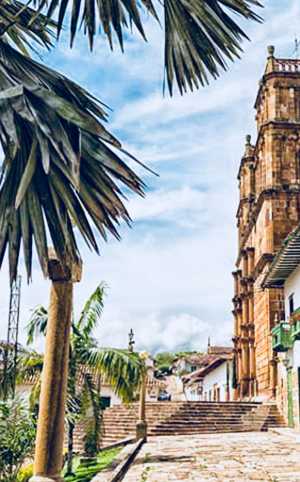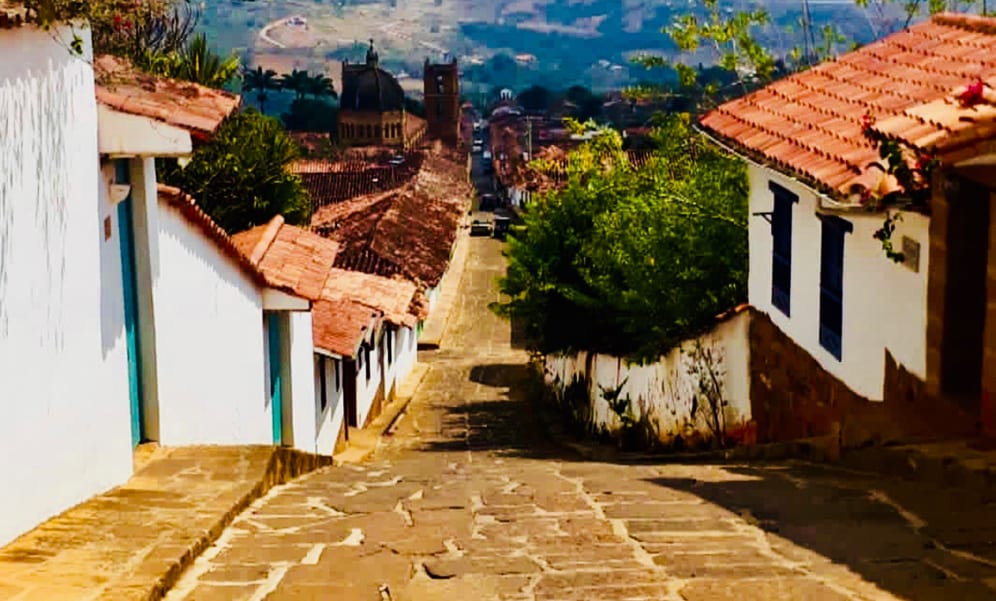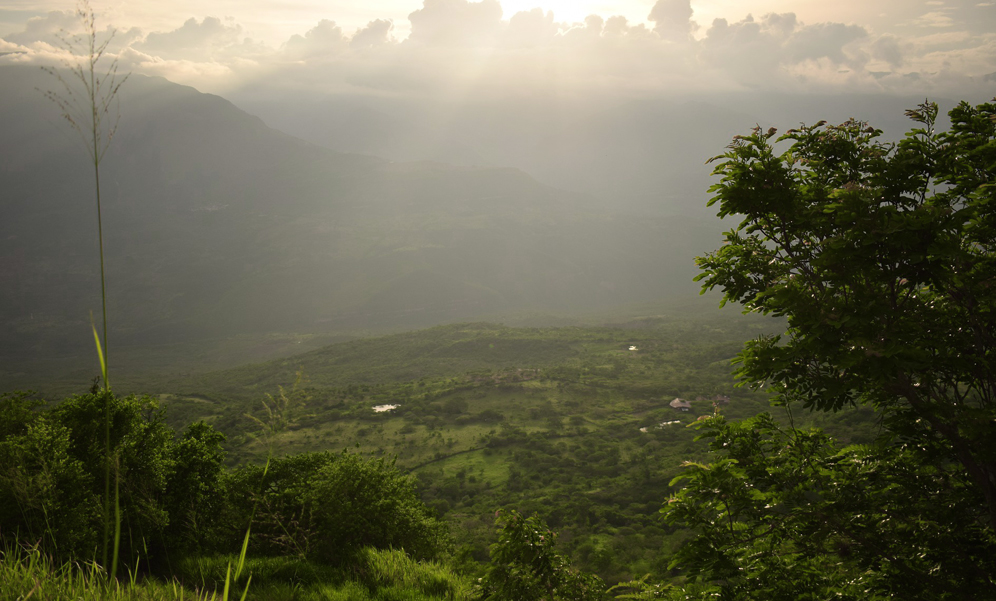In the center of Santander (department in Colombia) travellers find experiences that complement each other. Barichara is calm and silence. A place of warm and dry climate with stone streets that belongs to the Network of Colombian Town Heritage (the Network of Colombian Town Heritage has achieved that 17 Colombian towns are declared “Well of National Cultural Interest”).
Barichara

Let’s start by locating ourselves. Barichara is a Colombian municipality located in the department of Santander. It is part of the province of Guanentá.
The population is known for its buildings of the late eighteenth century. The old sector of the population was declared cultural patrimony of the country by decree 1654 of 1978.
In contrast to the modernity of the capital, this is a colonial town of incomparable beauty and conservation. Their Andalusian style houses proudly display the skill of the rock carving patients who molded this small town, rock by rock.
Its streets are covered in clay-colored stones, you cross through squares full of trees and you can see the walls of the footprints in the houses, roofed with clay tiles.
The fact is that hidden among mountains, pastures and blue skies is one of the prides of the Department of Santander and of every Colombian who loves his country.

The home of the Guane
Barichara was the home of the guane. They were an indigenous people. The cultural practice relates them to towns like the quimbaya, panches, pijaos, laches, muiscas and chancos and to distant cultures such as the maya, the nazca and the paracas; the guanes, in their case, did it to demonstrate greater ferocity in their faces, and to resemble the felines.
A place for rest.
– Guane Language-
The village of Móncora, was chosen by the Spaniards as an area of relocation and indoctrination of surviving Guanes. In 1617 the caciques of Móncora, Choagüete, Corotá, Butaregua and Guanentá, affirmed in a letter that in Móncora “we have churches and in it we make our festivities”.

In the ancient guane language Barichara means “Place for rest”. It is undoubtedly the most appropriate name for this place.
A place that welcomes tired souls, unenthusiastic routines and gray days. Here everything is color, smiles and chirping hummingbirds every morning.
Barichara was not founded until 1705 when the Spaniards wanted to commemorate an apparition of the Virgin Mary carved into a rock. That is why a church was built there.
And it is this fact, which gives us the legend of the miracle of the stone. It happened at the beginning of the 18th century, in 1702 a peasant from the region met the Virgin. The apparition was made on a stone where the image appeared clearly carved.
The essence
Once the subject of the legend has been overcome, it is necessary to return to the essence of this place. Part of its essence is in its colors. This place is tricolor: white, green and ocher reign in its stone streets, wooden balconies and stepped walls.

Barichara, keeps a special aura. Walking around it, walking through the park, the churches and the surroundings is something that is priceless. It is visited by foreigners and Colombians who seek calmness.
This municipality was declared a National Monument in 1978 and since then it has been a must for those tourists who visit the region and wish to enjoy a peaceful environment.
But Barichara offers much more. A few kilometers away are extreme sports, caves and rivers, innumerable colonial towns like Guane, with its petrified fossils, San Gil, with its parks and rivers, Curití with crafts in fíque or Socorro with its beautiful architecture and its old and colonial atmosphere. A place full of caves, extreme sports, rivers, waterfalls, huge mountains.

Barichara, smells like quality of life. This small town is considered by many, the most beautiful in the country. Time does not fly but it passes slowly, the weather is not good but it is better, and people intoxicate you with sincere hospitality and I would say innate.
Barichara is full of artists, in each of its streets you can find handicrafts.
The greatest fame of Barichara is in its carvers, it is a town famous for its work in stone and marble that is extracted from its surroundings and is worked by tradition.
In the background there are always mountains and cotton clouds intertwined. Certainly waking up, regardless of the clock, is a pleasure because the trees and plants say good morning.
The food and cultural options
The gastronomy is absolutely incredible and incomparable. I just have to say: Hormigas Culonas. Roasted and salted, these cockroach-sized insects are eaten as if they were peanuts.
They are capable of flavouring meals as no one would have imagined. I want to make a parenthesis, Colombians are not the only ones who eat insects. In several countries of Latin America and Asia it is common to eat crickets, grasshoppers and weevils, rich in proteins and vitamins.

From Barichara you can travel to different beautiful and nearby destinations. The options are multiple, especially having San Gil, the Colombian capital of extreme sports (Rafting, climbing, paragliding, etc.) or the exciting Valley of the Chicamocha, where the rivers heal a vertiginous landscape.
Barichara offers activities that attract tourists. The municipality counts on numerous restaurants, hotels, coffees and bars that conserve the colonial architecture. It has also been a location for telenovelas and films, as well as film festivals (Green Film Festival of Barichara), theater and other events.
A dream retreat

Without a doubt, it is one of the great pride of the people of Santander and it is not for less. After all, to hold the title of being “the cutest village” in a country that has so many beautiful landscapes and municipalities of great tradition, it is because this place has something really special.
It is a dream retreat in which a colorful cloth hammock accompanies us, where the unmistakable sounds of nature at night are the soundtrack and the juices of a thousand tropical fruits are the best for eternal life.
In this town, the sun plays with colors. And as is to be expected in a place as magical as this one, culture lives on the surface. A dream retreat in which a colorful fabric hammock shelters us and the unmistakable sounds of nature at night are the soundtrack to this experience.


